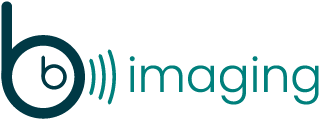Anyone in the field can tell you that sonography is a competitive career path, and it’s not difficult to see why. Sonography schools can get you in, out, and into a paying job within 2 years. Sonographers make an excellent starting salary and have a highly positive job outlook, according to the Bureau of Labor Statistics. The work itself provides mental stimulation, variety, and the ability to make a direct impact on patient lives.
All those benefits mean sonography programs are often highly competitive, with far more applicants than there are seats available. So, if sonography is your dream job, how do you get one of those seats?
What Path to Take
While most programs are 2-year degrees, bachelor’s degrees are also available. For those who already have degrees, or are already trained in another healthcare practice, 1-year certification programs are also an option. Once you know which path is right for you, it’s time to choose a sonography program.
What to Look for in a Sonography Program
Finding the right program can be trickier than you think. While you might default to looking for a desirable location or prestigious school, there are a variety of factors to consider. Here are our top four:
1. Accreditation
When searching for programs, the first big element to look for is accreditation. The Commission on Accreditation of Allied Health/Education Programs (CAAHEP) oversees that and has provided an easy way to find accredited sonography programs through its online search tool.
*Pro-tip: Be careful when researching 1-year certification programs since these are more likely to be unaccredited.
2. Specializations
Specialization is typical in sonography. Common specializations include echocardiography, obstetrical sonography, neurosonography, and vascular sonography. If you have a particular interest, you’ll want to make sure the program you’re considering offers it.
3. Curriculum
Sonography will feature science and math-heavy coursework. Don’t be surprised when you see physics included in the lineup! In addition, when you look over the offered curriculum, make sure there are plenty of hands-on lab experiences available.
4. Clinicals
Speaking of hands-on experience, let’s talk clinical hours. These will be required for graduation, but are often structured differently. Some programs will offer all coursework first and all clinicals second. Other programs will ask you to complete them simultaneously. In addition, some programs will ask you to find a site to perform your hours, while other schools will assign a site to you. If you have a strong preference in any of these areas, take that into consideration when choosing a sonography program.
*Pro tip: Do your homework and consider all the possibilities. Can you make clinical hours work logistically and financially? What if the school assigns you a site that is an hour or two away?
How to Get into a Sonography Program
So, you’ve chosen your path and your program. Now it’s time to make this dream job a reality. Here are our top eight tips for getting into sonography school:
1. Consider Character Qualities
Before you get too far into the application process, take a small pause to make sure this is right for you. Sonographers need to be driven and self-motivated to perform at a high level. They have to be team-oriented, adaptable, and willing to receive criticism. They also must be willing to keep learning through classes and continuing education credits.
Maybe most importantly, sonographers need to be perfectionists. The thoroughness of an ultrasound can be the difference between early intervention and misdiagnosis. Think of it like real estate. If a realtor doesn’t take a picture of the pool, potential buyers won’t know it’s there, and that will impact their buying decision. Similarly, if a sonographer does not capture an image of an abnormality, the doctor can’t diagnose it, and that will impact the patient’s treatment plan. Missing a Stage 1 diagnosis could result in a Stage 4 diagnosis later, and by then, it could be too late to treat.
That’s a lot of responsibility. However, if you feel like you check those character quality boxes and are excited about the responsibility for accurate diagnoses, read on!
2. Meet All the Requirements
Most sonography programs have a mix of requirements that include GPA, standardized test scores, and required coursework. As competitive as these programs are, it should come as no surprise that you must at least meet the minimum requirements to have a chance. Know what those requirements are and be prepared to prove you meet them.
3. Do All the Extra Things
Sonography school prerequisites will likely include a whole list of recommendations in addition to the program’s requirements. Do as many of them as you can. Complete the extra coursework. Take a CPR class. Volunteer. Shadow a sonographer. Completing these extras shows that you are serious about this career path and this program. If you’re not sure where to start, consider applying to be one of BB Imaging’s technical assistants. You’ll gain healthcare experience and work alongside sonographers every day.
4. Submit a Complete Package
Your application package should include all requested materials and should be submitted on time. It’s too easy to just throw away an incomplete application in favor of a completed one or to throw away a late application in favor of one that was submitted on time. Some programs even have a policy that prevents them from wasting time on incomplete applications.
5. Complete Observation Hours
Observation hours or shadowing is sometimes recommended, sometimes required. Either way, we encourage you to complete this step. Being in an office and seeing a sonographer in action is the best way to determine whether this is a career you want to pursue. And don’t forget to track your hours!
6. Gather Letters of Recommendation
Some programs will require these, some will not. If there’s a way to include them, do it! Recommendations from others can make your application stronger. Tell your science and math teachers, sonographers you shadowed, or past/current supervisors about your aspirations and ask them to provide a letter. Make sure to provide them with the recipient’s contact information, any key elements the program is looking for, and a deadline.
7. Prep for an Interview
The sonography school interview is more important for some programs than others. Regardless of how weighty the interview is, it’s a good idea to show up prepared. Before setting up an interview, you should already understand what the program entails and meet all other requirements. During the interview, you should be friendly, attentive, and articulate—all necessary traits for a good sonographer. As much as you can, demonstrate a knowledge of sonography and your aspirations related to the field. And ask questions, even if you only have time for one.
8. Persevere
This step might be the hardest. Obviously, we’re hoping these tips catapult you to the top of your preferred program’s list of applicants and that you ultimately get accepted on your first try. But… denials happen. Just remember, you’re not the only one to receive a rejection letter, and this gives you more time to strengthen your application for next time.
We hope you find these tips helpful. If you have any questions our stellar sonographers can help with, drop them in the comments!











